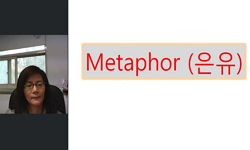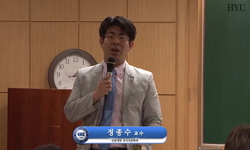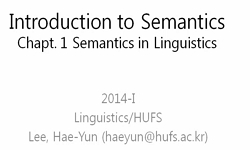이 글에서 우리는 법의 실현과정에 대한 방법론적ㆍ언어철학적 통찰과 법제정/법적용 이분법에 기초한 고전적 권력분립이론 사이의 괴리에 착안하여 주로 언어의 관점에서 권력분립의 의...
http://chineseinput.net/에서 pinyin(병음)방식으로 중국어를 변환할 수 있습니다.
변환된 중국어를 복사하여 사용하시면 됩니다.
- 中文 을 입력하시려면 zhongwen을 입력하시고 space를누르시면됩니다.
- 北京 을 입력하시려면 beijing을 입력하시고 space를 누르시면 됩니다.
https://www.riss.kr/link?id=A100352845
- 저자
- 발행기관
- 학술지명
- 권호사항
-
발행연도
2015
-
작성언어
Korean
-
주제어
권력분립 ; 명확성원칙 ; 의미론 ; 규범적 화용론 ; 법률해석 ; 로버트 브랜덤 ; separation of powers ; clarity principle ; semantics ; normative pragmatics ; legal interpretation ; Robert Brandom
-
등재정보
KCI등재
-
자료형태
학술저널
-
수록면
427-476(50쪽)
- DOI식별코드
- 제공처
-
0
상세조회 -
0
다운로드
부가정보
국문 초록 (Abstract)
현대 민주적 헌법국가를 구성하는 권력분립의 원칙은 법률의 제정과 제정된 법률의 기계적 적용이라는 단순한 도식으로 이해될 수 없다. 이는 무엇보다 법률의 텍스트적 성격, 즉 법률이 언어기호의 복합체라는 사정에 기인한다. 즉 권력과 권력 상호간의 커뮤니케이션이 폭력적 작용이나 주권적 통일성이 아니라, 언어를 매개로 이루어지는 한, 법적용단계가 법을 구성하는 창조적 요소를 갖게 되는 것은 불가피한 것이다. 동일한 맥락에서, 입법자가 제정하는 법률이 갖는 명확성 역시 법률의 일반성과 언어의 맥락구성성에 비추어 볼 때 완벽하게 실현될 수 없다. 따라서 규범체계가 마치 입법자의 창조행위에 의해 세계에 정립되고, 이를 통해 이념적으로 효력을 갖는 완전무결한 체계로 형성되며 법관과 행정공무원은 - 설령 해석이 필요할지라도 - 그저 이 완전한 규범체계를 적용하기만 하면 된다는 식의 사고는 타당성을 상실하게 된다.
바로 이러한 점을 이론적으로 고찰하기 위하여, 우리는 메르클(Adolf Merkl)과 켈젠(Hans Kelsen)의 법단계구조이론(Stufenbautheorie des Rechts)을 통해 법‘적용’이 가진 창조적 측면을 확인하였다. 이를 통해 입법자의 법제정이란 사법과 행정의 ‘법제정’에 일정한 범위(Rahmen)를 제공하는 것이고, 법률이 법의 구체화과정을 조종할 수 있는 역량은 이 범위의 명확성에 의존한다는 입장에서 명확성원칙의 의미를 살펴보았다. 그러나 명확성원칙 역시 언어 자체가 갖는 한계로 인해 완벽한 법률구속을 실현할 수 없다는 사실을 의미론과 화용론의 관계에 비추어 밝히는 한편, 의미론에 대한 화용론의 우위가 결코 사법과 행정의 자의를 정당화하지 않는다는 점 역시 지적하였다. 사법/행정을 통한 법구성적 활동 역시 일정한 규칙에 의해 지도되는 까닭이다. 그 때문에 언어규칙과 방법규칙을 통한 구속의 의의와 한계를 톺아보고, 이를 로버트 브랜덤(Robert Brandom)에 의해 발전된 이른바 규범적 화용론(normative Pragmatik)에 관한 언어철학이론에 연결시켜, 법과 언어규칙의 사회적ㆍ실천적 성격을 재차 확인하고, 이를 통해 법적용의 구성적 및 창조적 성격을 철학적으로 정당화하기 위한 단초를 마련하였다.
이 글에서 우리는 법의 실현과정에 대한 방법론적ㆍ언어철학적 통찰과 법제정/법적용 이분법에 기초한 고전적 권력분립이론 사이의 괴리에 착안하여 주로 언어의 관점에서 권력분립의 의미를 밝히고, 오늘날의 국가현실에 비추어 권력분립원칙을 재구성할 수 있는 길을 모색하고자 하였다. 다만, 법학방법론과 법적 논증이론이 사법부의 판결을 법‘적용’의 중심으로 전개하고 있다는 사정을 감안하여 주로 입법과 사법의 관계를 우선적으로 고려하였다.
현대 민주적 헌법국가를 구성하는 권력분립의 원칙은 법률의 제정과 제정된 법률의 기계적 적용이라는 단순한 도식으로 이해될 수 없다. 이는 무엇보다 법률의 텍스트적 성격, 즉 법률이 언어기호의 복합체라는 사정에 기인한다. 즉 권력과 권력 상호간의 커뮤니케이션이 폭력적 작용이나 주권적 통일성이 아니라, 언어를 매개로 이루어지는 한, 법적용단계가 법을 구성하는 창조적 요소를 갖게 되는 것은 불가피한 것이다. 동일한 맥락에서, 입법자가 제정하는 법률이 갖는 명확성 역시 법률의 일반성과 언어의 맥락구성성에 비추어 볼 때 완벽하게 실현될 수 없다. 따라서 규범체계가 마치 입법자의 창조행위에 의해 세계에 정립되고, 이를 통해 이념적으로 효력을 갖는 완전무결한 체계로 형성되며 법관과 행정공무원은 - 설령 해석이 필요할지라도 - 그저 이 완전한 규범체계를 적용하기만 하면 된다는 식의 사고는 타당성을 상실하게 된다.
바로 이러한 점을 이론적으로 고찰하기 위하여, 우리는 메르클(Adolf Merkl)과 켈젠(Hans Kelsen)의 법단계구조이론(Stufenbautheorie des Rechts)을 통해 법‘적용’이 가진 창조적 측면을 확인하였다. 이를 통해 입법자의 법제정이란 사법과 행정의 ‘법제정’에 일정한 범위(Rahmen)를 제공하는 것이고, 법률이 법의 구체화과정을 조종할 수 있는 역량은 이 범위의 명확성에 의존한다는 입장에서 명확성원칙의 의미를 살펴보았다. 그러나 명확성원칙 역시 언어 자체가 갖는 한계로 인해 완벽한 법률구속을 실현할 수 없다는 사실을 의미론과 화용론의 관계에 비추어 밝히는 한편, 의미론에 대한 화용론의 우위가 결코 사법과 행정의 자의를 정당화하지 않는다는 점 역시 지적하였다. 사법/행정을 통한 법구성적 활동 역시 일정한 규칙에 의해 지도되는 까닭이다. 그 때문에 언어규칙과 방법규칙을 통한 구속의 의의와 한계를 톺아보고, 이를 로버트 브랜덤(Robert Brandom)에 의해 발전된 이른바 규범적 화용론(normative Pragmatik)에 관한 언어철학이론에 연결시켜, 법과 언어규칙의 사회적ㆍ실천적 성격을 재차 확인하고, 이를 통해 법적용의 구성적 및 창조적 성격을 철학적으로 정당화하기 위한 단초를 마련하였다.
다국어 초록 (Multilingual Abstract)
However, since legal methodology and legal argumentation theory put the court’s ruling at the center of its scope, thus the relationship between legislature and jurisdiction is preferentially considered.
The separation of powers principle, which constitutes modern democratic constitutional state, should not be understood as a simple formula of statute enactment and its mechanical application. The principle is rather complicated, its complexity derives from statute’s textual feature, that is, from the fact that statute is also a complex of language signs. Since the communication between a power and the other is not accomplished by violence nor by sovereign unity, but is mediated by language, certain creative feature in application process is inevitable. Likewise, the clarity and precision of statutes enacted by lawmakers cannot be complete due to the law’s generality and language’s contextual constitutiveness. Therefore, such idea that the norm system brought to our world by lawmakers’ creative action is (ideologically) valid, impeccable and the judiciary’s, administration’s job is limited to applying such perfect norm system ? even when certain interpretation is in need ? is not appropriate.
In order to consider this point theoretically, the creative aspect of legal ‘application’ is studied in reference to Adolf Merkl’s and Hans Kelsen’s “Stufenbautheorie des Rechts”. According to the theory, legislator’s enactment provides certain range (Rahmen) to judiciary’s and administration’s ‘enactment’, the statute’s ability to control the actualization process of law is dependant upon the clarity of such range. From this perspective, the meaning of clarity principle is examined in this paper. However, the paper also points out that even the clarity principle cannot realize legal restriction to full extent, due to language’s own limitation. Moreover, it notes that the superiority of pragmatics over semantics does not rationalize arbitrariness of judiciary and administration, since their constitutional activities are also guided by certain rules. In examining the meaning of legal restriction and its limitation through language rules and methodological principles, and by linking it to Robert Brandom’s normative pragmatics and by reassuring law and language rules’ social practical character, this paper tries to offer a way to philosophically rationalize legal application’s constitutive and creative feature.
Hinted by the inconsistency which lies between methodological, language-philosophical insight and classical separation of powers theory (which is based on the dichotomic division of enactment and application), this paper reveals the meaning of separat...
Hinted by the inconsistency which lies between methodological, language-philosophical insight and classical separation of powers theory (which is based on the dichotomic division of enactment and application), this paper reveals the meaning of separation of powers mainly from language perspective and seeks to reformulate the principle considering today’s reality.
However, since legal methodology and legal argumentation theory put the court’s ruling at the center of its scope, thus the relationship between legislature and jurisdiction is preferentially considered.
The separation of powers principle, which constitutes modern democratic constitutional state, should not be understood as a simple formula of statute enactment and its mechanical application. The principle is rather complicated, its complexity derives from statute’s textual feature, that is, from the fact that statute is also a complex of language signs. Since the communication between a power and the other is not accomplished by violence nor by sovereign unity, but is mediated by language, certain creative feature in application process is inevitable. Likewise, the clarity and precision of statutes enacted by lawmakers cannot be complete due to the law’s generality and language’s contextual constitutiveness. Therefore, such idea that the norm system brought to our world by lawmakers’ creative action is (ideologically) valid, impeccable and the judiciary’s, administration’s job is limited to applying such perfect norm system ? even when certain interpretation is in need ? is not appropriate.
In order to consider this point theoretically, the creative aspect of legal ‘application’ is studied in reference to Adolf Merkl’s and Hans Kelsen’s “Stufenbautheorie des Rechts”. According to the theory, legislator’s enactment provides certain range (Rahmen) to judiciary’s and administration’s ‘enactment’, the statute’s ability to control the actualization process of law is dependant upon the clarity of such range. From this perspective, the meaning of clarity principle is examined in this paper. However, the paper also points out that even the clarity principle cannot realize legal restriction to full extent, due to language’s own limitation. Moreover, it notes that the superiority of pragmatics over semantics does not rationalize arbitrariness of judiciary and administration, since their constitutional activities are also guided by certain rules. In examining the meaning of legal restriction and its limitation through language rules and methodological principles, and by linking it to Robert Brandom’s normative pragmatics and by reassuring law and language rules’ social practical character, this paper tries to offer a way to philosophically rationalize legal application’s constitutive and creative feature.
목차 (Table of Contents)
- 국문초록
- Ⅰ. 머리말
- Ⅱ. 법의 이중적 측면과 이중적 단계구조 - 아돌프 메르클의 법제정이론
- Ⅲ. 명확성원칙의 의미
- Ⅳ. 권력분립과 명확성원칙에 대한 언어철학적-방법론적 성찰
- 국문초록
- Ⅰ. 머리말
- Ⅱ. 법의 이중적 측면과 이중적 단계구조 - 아돌프 메르클의 법제정이론
- Ⅲ. 명확성원칙의 의미
- Ⅳ. 권력분립과 명확성원칙에 대한 언어철학적-방법론적 성찰
- Ⅴ. 맺음말
- 참고문헌
- Abstract
동일학술지(권/호) 다른 논문
-
- 강원대학교 비교법학연구소
- 김세준(Kim, Sejun)
- 2015
- KCI등재
-
- 강원대학교 비교법학연구소
- 김학성(Kim, Haksung)
- 2015
- KCI등재
-
- 강원대학교 비교법학연구소
- 김한택(Kim, Han-Taek)
- 2015
- KCI등재
-
- 강원대학교 비교법학연구소
- 김희동(KIM, Hee-Dong)
- 2015
- KCI등재






 KCI
KCI DBpia
DBpia






